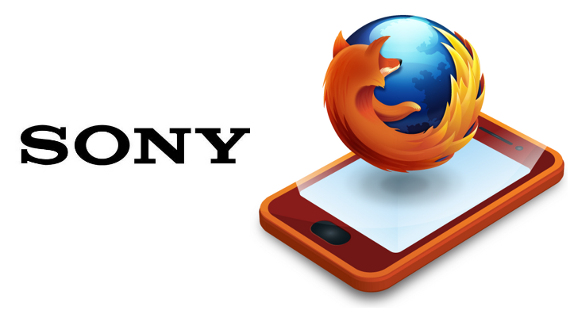jeff_rigby
Banned
Sorry...If there is no I think or I believe or I guess in the text then it's a summary or quote. To add insult to injury, I didn't come to a conclusion in the post before yours...it's mostly facts about HEVC.It would help if Jeff started posting a "what I think is happening" with a lower paragraph with "heres why"
Im a pretty tech literate guy, but reading his posts just make my eyes hurt. Its hard to seperate the opinion and speculation from the facts and information.
Facts from April 2013 to CES 2014 for context:
1) The FCC is pushing for an all IP phone standard.
2) HTML5 was supposed to reach candidate status by 2022 but the HTML 5 working group has changed that by drawing a line for features and announcing HTML 5.0 recommendation status for 2014 with HTML 5.1 for 2016, HTML 5.2 then HTML5.3 and so on. (HTML5 will be used for DLNA CVP2)
3) April 2013 "Google just announced that it is forking WebKit and launching this fork as Blink (with Javascript V8 engine and backwardly compatible code removed). As Google describes it, Blink is “an inclusive open source community” and ”a new rendering engine based on WebKit” that will, over time, “naturally evolve in different directions.” Blink, Google says, will be all about speed and simplicity."
From Cable Labs reference implementation for DLNA CVP2: "Note: On October 1st, Qt switched from using WebKit to Google's Blink. Our Qt/WebKit browser uses the latest working WebKit version, but will not be kept up to date with more recent changes. The current plan is to port the browser to GTK/WebKit going forward."
Samsung is using QTwebkit BINK in their 2013 Smart TVs.
4) Comcast Cable has a combination of fiberoptic and traditional copper RF cable to the home and with upgrades recently completed to the infrastructure can support 300 Mb/sec down speeds in most markets and 3Gbit/sec in select markets using DOCSIS 3.0 cable modems.
DOCSIS 3.1 will start to be in place by 2015 and it allows 50% faster than DOCSIS 3.0 and better error correction so it can be used with cable frequencies that were previously unusable, 750Mhz to 1.3 Ghz maybe higher. Planned is 24 contiguous channel 1-10 Gbit down and up to 1Gbit upstream in most markets by 2017.
STMiroelectonics using 64 bit ARM IP manufactured on it's FD-SOI process will be used to produce DOCSIS 3.1 modems and Hubs.
With the transition to DOCSIS 3.1 a all IPTV Cable system will start to be phased in by 2017+ which matches the previous cites for the Media gateway transition (X5 headless gateway and moving the DVR to the cloud. First DOCSIS 3.1 modems will include DOCSIS 3.0 also.)
5) Statements by Sony like they are thinking of starting a all IP network or the short throw 4K laser wall projector with an example use; a wall with a live outdoor 4K scene don't make sense unless you know the above and that eventually Comcast will relax their caps as their new ability to IP stream massive amounts of content will need content to stream and new markets will be created. In the short term HEVC can be used to reduce the bandwidth used and allow more IPTV now and still be under the 250 GB/month Comcast cap.
6) The PS3 and the PS4 support 1Gb/sec LAN ports and exceed most current cable modem speeds. By 2017 most markets will have DOCSIS 3.1 cable modems sharing 10Gbit/1Gigbit with the last mile copper node (254 users) sharing this bandwidth.
7) ST Microelectronics PDF released at CES 2014 outlines their IPTV business plans and the need for FD-SOI @28nm and smaller (HEVC and ARMv8 FD-SOI for 4K TVs, Media gateways and Hubs => 10Gbit/sec and 4K in consumer products) http://electronics360.globalspec.com/article/3937/st-takes-set-top-boxes-to-64bit-fdsoi Contrary to the opinion of some who thought it was a "failed process", they have forges producing their chipsets using 28nm FD-SOI since early 2013 but were waiting for the DOCSIS 3.1 standard to be ratified (OCT 2013) before producing their DOCSIS 3.1 chipset and CES 2014 (Jan 2014) before announcing.
Cable Labs Reference Implementation and Web site here for Linux and Windows will align with DLNA CVP2 and includes:
Java (For XTV applications and more)
GLib – utility library. (makes it a Gnome stack)
Gstreamer / HDHomerun / VLC– tuner control. => HDHomerun Mentioned in the 4/2010 Xbox 720 powerpoint.
GStreamer – media decoding and presentation.
wxWidgets – user interface. (Javascript engine GTK in the near future again Gnome)
Net-SNMP – Master Agent.
PS3, PS4 and Vita use BSD versions of Gnome Mobile (functionally equal) (Sony SNAP Developer program = Linux Gnome Mobile) PS4 open source software list is key here as they are using GTKwebkit APIs and Mono for Playstation Mobile. Mono on Linux and BSD calls CairoGL (3D vector graphics engine) and uses Glib which makes it a Gnome VM but with PS Mobile on Android platforms it calls Java/Android to write to Android's Skia Vector Graphics engine. Samsung used BSD versions of QTwebkit also based on Gnome libraries or equivalent but now based on Google Blink. Will Sony follow Samsung to Google QTBink or stay with GTKwebkit?








